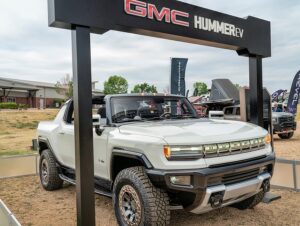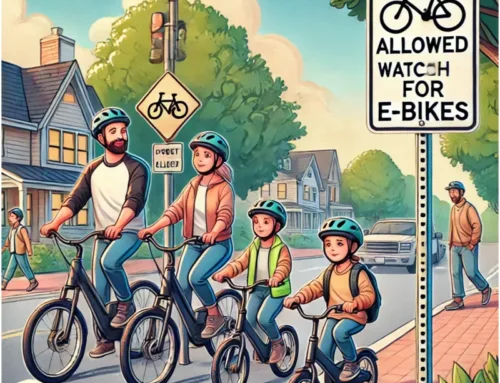For more than a decade, America’s roads had been getting safer, based on the tracking of motor vehicle accident fatality rates by the National Highway Traffic Safety Administration (NHTSA). Unfortunately, in 2020, something changed. Despite a reduction in total cars on the road and miles driven in the early months of the pandemic, automotive accident fatality rates started to climb, and that trend has persisted for the past two years. The NHTSA estimates that a total of 31,720 people were killed in auto accidents in the months of January through September of 2021, representing an approximately 12 percent increase over the 28,325 automotive fatalities during the same months of 2020. If the roads weren’t already dangerous enough, automotive industry experts are worried that several new models of electric trucks and SUVs literally outweigh previous models to a degree that could make accidents involving them more dangerous.
 The most extreme case of these new super-heavy electric vehicles is the 2022 GMC Hummer EV, weighing in at 9000 pounds – yes, four and a half tons – and equipped with a 1000 horsepower motor, which gives it what Car and Driver describes as “vision-blurring acceleration.” Granted, electric Hummers probably won’t be taking over the roads anytime soon, in light of their $110,000 price tag, but there are several other electric truck and SUV models hitting dealerships this year with somewhat less prohibitive price points, and which still substantially outweigh their traditional counterparts. The Audi e tron, Cadillac LYRIQ, and the Lucid Air all push past the 5000-pound mark.
The most extreme case of these new super-heavy electric vehicles is the 2022 GMC Hummer EV, weighing in at 9000 pounds – yes, four and a half tons – and equipped with a 1000 horsepower motor, which gives it what Car and Driver describes as “vision-blurring acceleration.” Granted, electric Hummers probably won’t be taking over the roads anytime soon, in light of their $110,000 price tag, but there are several other electric truck and SUV models hitting dealerships this year with somewhat less prohibitive price points, and which still substantially outweigh their traditional counterparts. The Audi e tron, Cadillac LYRIQ, and the Lucid Air all push past the 5000-pound mark.
What makes these vehicles so much more dangerous than their less heavy counterparts? It’s a simple matter of physics. Force equals mass times acceleration. This has two major effects on auto safety. First, a heavier vehicle takes longer to come to a stop. According to Consumer Reports, the 5000-pound models listed above require as much as 163 feet of stopping distance to go from 70 mph to a full stop. The average stopping distance at that speed, according to the National Association of City Transportation Officials, is between 120 and 140 feet. An increase in stopping distance gives drivers less time to respond to sudden changes in the road ahead – and if the vehicle is newly purchased or a rental, the driver may not yet realize they need the extra room to stop with a heavier vehicle.
The other major hazard of heavier vehicles is the effect the additional mass has on a collision. Again, the force of the impact is directly correlated to the vehicle’s mass: a heavier vehicle hits harder than a lighter vehicle at the same speed. This might sound like a high school physics word problem at first, but it has real-world consequences for the motorist who gets t-boned when the driver of one of these super-heavy electric vehicles tries to beat a red light. Either of these problems alone would be worrying, but the two issues cannot be separated, because they are both caused by the higher mass of these heavier vehicles. When you have vehicles that are both harder to stop, and pack a much greater force on impact in the event of an accident, you have vehicles that raise red flags for automotive safety experts.
Certainly, there are traditional gas-powered vehicles on the road today that are heavier than average, with some of the larger gas-powered SUVs and trucks breaching the 5000-pound mark, and these vehicles carry the same dangers on the road for the same reasons. Few consumer vehicles can challenge the four-and-a-half-ton Hummer EV, however. Moreover, consumers who buy these super-heavy electric vehicles, who may be drawn to the environmental benefits afforded by electric cars, may not realize the safety concerns in play with these much heavier electric vehicles.
Ultimately, the best solution to these issues for now is awareness and caution, both for the drivers of these super-heavy electric vehicles and for other motorists sharing the road with them. For EV drivers, take the time to learn your vehicle’s comfortable stopping distance at a variety of speeds, and be sure to leave safe distance between your vehicle and the car ahead when driving. Pay special attention to much smaller cars that might fare poorly in a collision with your vehicle, and give them a little extra distance. For other motorists, watch for these heavy electric vehicles and give them plenty of room. A little extra courtesy and alertness can help prevent serious accidents with tragic consequences.
Contact MyNJInjuryLawyer Howard P. Lesnik
If you or a loved one suffered an injury in an accident in NJ, you should contact an attorney familiar with handling these claims. An experienced NJ Injury Lawyer will know how to obtain medical records, videos, photographs, experts, locate witnesses and contact the insurance company so you can make a claim for your injuries.
My NJ Injury Lawyer Howard P. Lesnik, Esq. offers complimentary strategy sessions to address any issue or questions you may have for your injury claim in NJ.
Please contact NJ Injury Lawyer Howard Lesnik, Esq., immediately if you were involved in an accident. I personally handle NJ personal injury cases on a regular basis. Please contact me now by email, by phoning 908.264.7701, or by completing the form to the right to schedule your complimentary 30-minute strategy session. Call me direct and I will answer 5 questions that you have about your potential claim.







